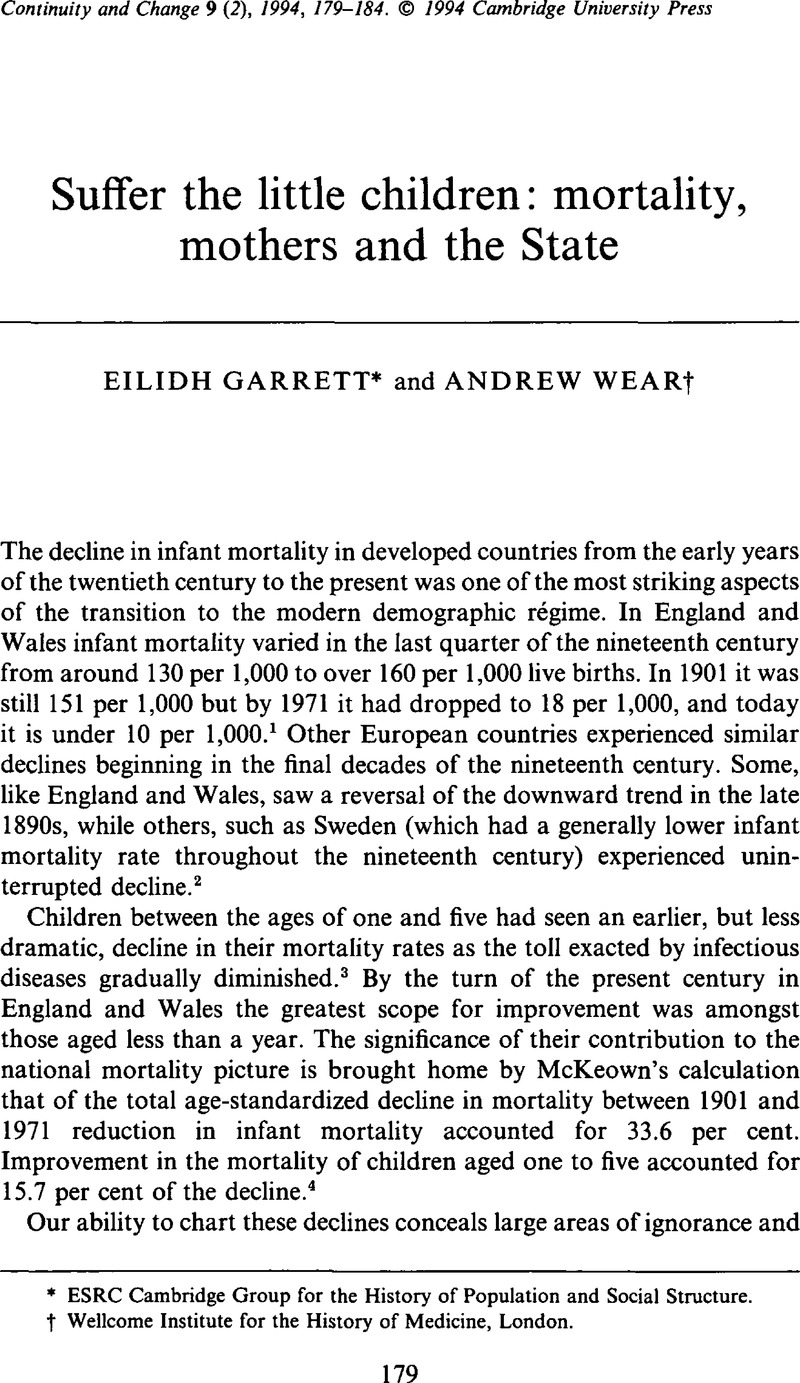No CrossRef data available.
Article contents
Suffer the little children: mortality, mothers and the State
Published online by Cambridge University Press: 29 January 2009
Abstract

- Type
- Articles
- Information
- Copyright
- Copyright © Cambridge University Press 1994
References
ENDNOTES
1 In 1992 the infant mortality rate for England and Wales was 6.5 per 1,000 births (Balarajan, R. ed., Public health common dataset (London, 1993), 98).Google Scholar
2 Woods, R. I., Watterson, P. A. and Woodward, J. M., ‘The causes of rapid infant mortality decline in England and Wales, 1861–1921, Part 1’, Population Studies 42, 3 (1988), 343–65.CrossRefGoogle Scholar
3 See Woods, , Watterson, and Woodward, , ‘The causes of rapid infant mortality decline’, 348–50.Google Scholar
4 McKeown, T., Record, R. G. and Turner, R. D., ‘An interpretation of the decline of mortality in England and Wales during the twentieth century’, Population Studies 29 (1975), 391–422CrossRefGoogle ScholarPubMed, cited in Woods, , Watterson, and Woodward, , ‘The causes of rapid infant mortality decline’, 344.Google Scholar
5 McKeown, T., The modern rise of population (London, 1976).Google Scholar
6 Szreter, S. S. R., ‘The importance of social intervention in Britain's mortality decline c. 1850–1914: a re-interpretation of the role of public health’, Social History of Medicine 1 (1988), 1–37.CrossRefGoogle Scholar
7 Mercer, A., Disease, mortality and population in transition (Leicester, 1990).Google Scholar
8 Hardy, A., The epidemic streets: infectious disease and the rise of preventive medicine 1856–1900 (Oxford, 1993).CrossRefGoogle Scholar
9 For the history of breast-feeding, see Fildes, V., Breasts, babies and bottles: a history of infant feeding (Edinburgh, 1986)Google Scholar and Wetnursing: a history from antiquity to the present (Oxford, 1988).Google Scholar For the promotion of breast-feeding in early-twentieth-century Australia, see Smith, P. Meir, ‘“That Welfare warfare”: sectarianism in infant welfare in Australia 1918–1939’, in Fildes, V., Marks, L. and Marland, H. eds., Women and children first: international maternal and infant welfare 1870–1945 (London, 1992).Google Scholar
10 Woods, , Watterson, and Woodward, , ‘The causes of rapid infant mortality decline’, 362.Google Scholar
11 See Dyhouse, C., ‘Working class mothers and infant mortality in England 1895–1914’, Journal of Social History 12 (1978), 248–67.CrossRefGoogle ScholarPubMed
12 But see Hardy, , The epidemic streets (pp. 80–109)Google Scholar for an interpretation which places greater emphasis on the declining virulence of the diphtheria organism.
13 The issue of infant mortality in Italian foundling hospitals is also the focus of a paper entitled ‘Cheating the angel-makers: surviving infant abandonment in nineteenth-century Italy’, by David Kertzer and Michael J. White, which will appear in the next number of Continuity and Change (9:3).


